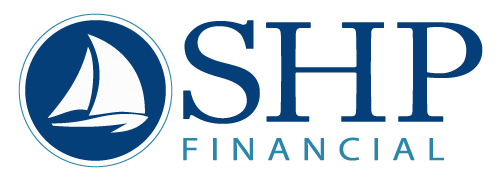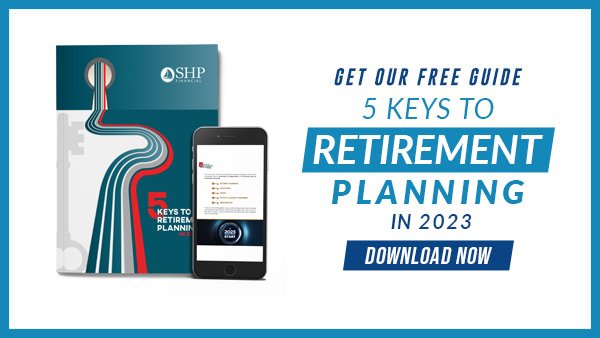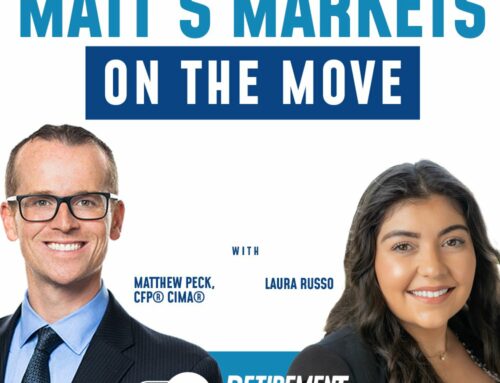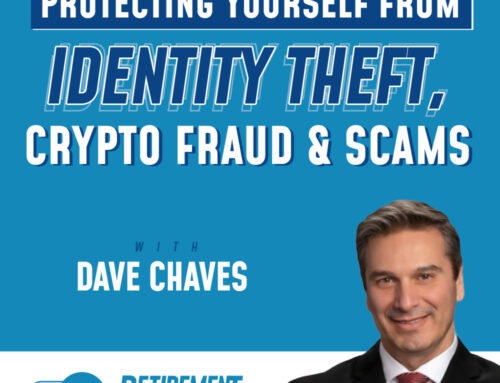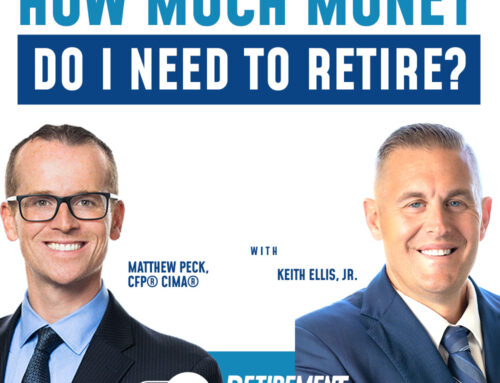A new version of the SECURE Act was passed on December 29, 2022. While we were celebrating the holidays, a lame duck Congress passed a law that made sweeping changes to financial and retirement planning. Whether you’re recently retired, saving for retirement or even just saving for college, these changes to the SECURE Act are worth noting.
With that in mind, today’s episode is all about the most important changes made by the new SECURE Act–and, most importantly, how they may actually benefit you.
You’ll learn how to take advantage of tax-deferred growth and catch-up contributions, a number of new financial tools available to employers and employees alike, and how the Labor Department is making it easier than ever to find lost 401(k)s from jobs you might’ve had 30 years ago.
In this podcast discussion, you’ll learn:
- Why the required minimum distribution age is increasing to 75 by 2033 and what makes this so important.
- The difference between traditional and Roth assets.
- How you can now take advantage of an unused (or underutilized) 529 to fund your grandkids’ retirement.
- How employers can now make emergency accounts available to their employees.
- Why all the changes to the SECURE Act reaffirm the importance of good financial planning.
Inspiring Quotes
- “I can’t stress this enough. I do believe that in general, without proper planning, things will fall through the cracks.”– Matthew Peck
- “The fact that you can delay distributions now for one more year or all the way to age 75 is fantastic.” – Matthew Peck
Interview Resources
Matthew Peck: Well, welcome again to another edition of the SHP Financials Retirement Road Map podcast. I’ll be your host today, Matthew Peck. I certainly hope, no matter where you are listening to this podcast right now, we hope you find it well and healthy. And certainly, if you’re driving with two hands on the wheel at all times, of course.
As promised, we wanted to use today to talk about the SECURE Act 2.0. And if you recall, the initial SECURE Act 1.0, if that’s where it goes by, was passed in December of 2019. And so, the SECURE Act 2.0 was passed at the end of 2022. Now, we get a kick out of kind of where it all happens historically, point being where the initial one, the SECURE Act 1.0, which changed some of these laws, which then got changed again, happened in December of 2019, well, something happened in spring of 2020 that might have sort of pushed that news underneath the rug.
And certainly, too, with the SECURE Act 2.0 that just got passed a couple of months ago or whenever it was, was passed on December 29, 2022. So, literally, Santa Claus had just finished his rounds and everyone was getting ready for New Year’s and we were still kind of coming over our holiday or in the middle of our kind of a holiday hangover. And while all of that was happening, Congress in their lame duck session was passing an extremely important law that changes so much about retirement planning, and in fact, has all these different impacts for people of all different ages, for people that are saving for retirement, people that are actually saving for college, which I’ll get to in a moment, people that are already retired.
It is amazing that such an important act gets passed, but literally, in the middle of the night when we’re, as I mentioned, in between Christmas and New Year’s. So, we wanted to take this time to make sure everyone understood the most important pieces of it. There is a lot there, but we certainly wanted to focus on the ones that we thought were of most interest. And as I said, we’re going to get it out to you, certainly encourage everyone to talk to their advisor about what it means to them individually. But sort of without further ado, I’m going to kind of go one by one as to one that I found the most interesting in this very, very critical act that was passed.
Okay. So, first and foremost is the fact that the required minimum distribution age, or what’s called RMD was changed from 72 to 73 beginning in 2023, and then again it goes up to 75 in 2033. Let me pause for a moment to let everyone know what RMDs are, again, just to kind of bring everyone up to speed. What RMD is or what it stands for is a required minimum distribution. Now, what that means is that as you are working and saving for retirement, you are either putting money away into IRAs or 401(k)s. And if it’s a traditional IRA or a traditional 401(k), you get a tax write-off.
So, let’s say, it puts $5,000 into an IRA. That $5,000 you write off on your taxes and you’re not taxed on that $5,000. So, it’s not taxed on the way in. However, once you reach a certain age and you start to take withdrawals, it’s now taxed on the way out. And what the IRS does or what the Congress says is that by a certain age, you must take the distributions. It is now a required minimum distribution or an RMD that you have to take at a certain age.
Over the past couple of years, I was mentioning, originally, it was 70 and a half, then it got bumped to 72. Now, it’s 73 beginning in 2023. So, if you turn 72 this year, you’re good. It only begins next year for every one that turns 73. And then as I mentioned, in about 10 years, it’s going to go up to age 75. So, this is important for a number of reasons. One, I appreciate the fact that longevity is becoming sort of part of legislators’ ideas and retirement ideas. We’re all living longer.
And being forced to take distributions at an earlier age when we want to sort of protect us as we’re living into our 70s, 80s, and 90s, the fact that you can delay distributions now for one more year or all the way to age 75, again, track at 10 years in the future now, is fantastic because it allows that type of tax-deferred growth to continue compounding interest, to earn interest on top of interest, and allow that nest egg to continue to grow without taking these RMDs every single year, so important there for that length of growth.
Also, we do a lot of what is called Roth conversion planning. So, we do it, which is a separate strategy that I’m not going to get into too, too much, but the whole idea is the fact that being able to convert old IRA money into Roth IRAs. And we used to say, “Okay, oh, shoot, we can do this up until your required minimum distribution age,” which sort of forces more taxable income. But now, okay, we have one more year now to plan for it. So, it’s important for existing Roth IRAs. And it’s also, as I mentioned, important for people to allow their IRA and pretax dollars to continue to grow that much further.
Secondly, they’re also increasing the catch-up contributions on the retirement plans. So, right now, we’re actually going into 2023, the catch-up contribution is $7,500. If you are over the age of 50, where you think of it as like, okay, if you’re underneath 50, you can make a contribution into your IRAs or Roth IRAs of $6,500. Once you’re over 50, they allow these types of catch-up contributions. Same idea happens in your 401(k), and now you can do an additional thousand dollars because, well, you’re 50 years old and they figure, all right, go ahead and put a little bit more into it.
Now, what they’re doing is beginning in 2025, if you are 60 years old, now, the catch-up contribution is going to be $10,000 or 50% more of the regular catch-up contribution. But think of it this way, again, on a simple level, rather than $7,500 in a couple of years, you’re going to be able to do $10,000, more money, more ability to do a catch-up provision, more money going into these IRAs or Roth IRAs, more money into your retirement. I mean, I think everyone has probably seen those statistics about how these many Americans don’t have any money in retirement or these many Americans are living solely off Social Security.
And again, I’m not saying the exact dates or data at this point in time, but I think everyone has seen that and understands a lot of people have not saved enough. Now, interestingly enough, they have addressed that, but at least if people are approaching retirement now, they’re increasing that ability to make more contributions, add more of these catch-up contributions to allow people to try to feather that nest as best as possible later in their career if they haven’t had a chance to. Now, certainly the earlier you do it, the better, putting money into it, and the SECURE Act 2.0 also did that.
So, for example, simple and SEP IRAs, now, those are really kind of self-employed, small business type of plans. They didn’t have Roth IRA options. Now, there are going to be Roth contributions that are allowed for simple IRAs, for SEP IRAs. Now, something that’s already been on the books, but we certainly have been encouraging people to look into Roth 401(k)s. That’s already been there. That hasn’t changed with the SECURE Act 2.0. But we’re always encouraging people to say, hey, if you have a 401(k), inquire to see if there’s a Roth 401(k) option.
Let me pause quickly just to make sure everyone understands the difference between traditional IRA and Roth IRA, or traditional 401(k) and Roth 401(k), or now, at this point, traditional simple IRA versus a rough, simple IRA. As I was explaining about the pretax dollars on the required minimum distributions, money that goes into a traditional IRA is you get a write-off now, so not taxed on the way in, but then you get taxed on the way out.
With Roth IRAs, Roth 401(k)s, Roth simple IRAs now, Roth Sep IRAs, so forth, and so on, money is taxed on the way in. So, you do pay taxes on that $5,000 or $10,000 that you put in. So, it’s taxed on the way in, but it’s not taxed on the way out, which means that once that money’s in that Roth form, it is tax-free for life, tax-free to you, tax-free to your spouse, tax-free to your beneficiaries, income tax-free, I should say. And that is such a powerful tool to have tax-free dollars in your back pocket.
And two things of note, first, we always talk about tax diversification. So, we love the idea, like, hey, if you need the write-off, take the write-off. But if you don’t necessarily need the write-off, have some of those tax-free dollars because we would love to have a client have some pretax dollars, some after-tax dollars, think brokerage accounts, and then have some tax-free dollars, have a little bit in each bucket. Again, everyone’s situation is different, but the idea of creating that tax diversification is so important. As you mentioned, the SECURE Act 2.0 really is adding to that level.
So, I’ve been focusing on, again, adding more towards retirement, so kind of focusing on people that are still accumulating at this stage. This is something that spoke to me that I wanted to share only because it was the fact that suddenly retirement planning and college planning now also got morphed together into this law. And I apologize, I’m going to talk about all these different terminologies and whatnot. So, you might need to listen to this once or twice, and then you get to listen to my voice again and again and again, oh, lucky you.
So, now let me explain what 529s are. 529 are specifically for college savings. So, the concept there was that, all right, it allowed people to put money into an account. Now, you get taxed on the way in, so kind of similar to a Roth in that way. However, if it was used for qualified educational expenses, then it comes out tax-free. So, this was great for people because we all know the cost of college education. I won’t get into the whole student loan thing and student loan forgiveness, that’s a little minefield there.
But in general, people were very, very– especially grandparents, love this idea of 529s because they can put money into an account that’s specifically for education. And no matter where you are, the political field, education’s a very good thing, right? But there was always a big drawback with the 529s. If an individual didn’t use it for qualified educational expenses, so let’s say a simple 529 for little Jimmy, Little Jimmy becomes a sports superstar, he gets a full ride. Well, now, the $50,000 in a 529, it’s like, what do I do with it? Do I give it to somebody else for their qualified educational expenses? Do I take the money out? Well, ooh, if I take the money out, it’s not used, and if it’s not used for qualified educational, I get taxed and I get a penalty on top of it.
Now, with the SECURE Act 2.0 that beginning in 2024, beneficiaries of 529s may roll over up to $35,000 during their lifetime. So, it’s a lifetime max to the Roth IRA. I can’t stress enough how great that is because, again, I’m going to go back to the example of Jimmy, right? So, Jimmy is my son. I set up a 529 for him and I’m like, okay, I’m going to make sure he has got a great education, and he may go to Harvard. Who knows, right?
So, he goes to Harvard, but it turns out he gets a scholarship because of the fact that, again, he’s a great javelin thrower. All right. Well, now, all that money that I put into that 529 is, again, initially, prior to December 29, 2022, it was going to be used for somebody else, or again, I’d have to take it out and pay a penalty. Well, now, I could take $35,000 of that unused 529 and put it into Jimmy’s Roth IRA. I can help fund his own retirement with that excess dollars.
So, now, it’s like a win-win. It could be used for educational expenses, which was the original idea. But if it’s not used for it, now, $35,000 can go into a Roth IRA for that beneficiary. I mean, it is the best of both worlds, education or tax-free for retirement. It was a great innovation that I was a very, very big fan of.
A couple of other ones that I’ll leave with you, I’m not going to go on too long because, again, there’s a lot here so it’s going to be a lot to digest. And thankfully, we’ll be talking about it year over year. Time after time, you’ll be hearing about it in the news, so forth, and so on. So, last couple that I want to share with you in regards to the SECURE Act 2.0. The first that I really, really liked, or the last part that I really, really liked, first was the emergency savings account. So, beginning in 2024, employers can establish an emergency saving account where employees can save up to $2,500 in a Roth-styled account that can then be accessed in the form if there is a qualified emergency. So, again, do like that as well.
So, same as I mentioned about how you hear the stories of people who do not save enough for retirement. You also hear stories of people that do not have enough emergency funds. And what’s worse, if the car goes or the furnace goes, the roof goes or whatever, then suddenly they’re racking up credit card debt to cover that necessary emergency. And we all know that if you get into debt, especially credit card debt, now we’re going in the opposite direction of everything that we’re talking about. So, having that emergency account that employers can establish, I think, is fantastic.
It also, I should say, too, I do love how they’ve begun to do automatic enrollment in 401(k)s. I mean, we’re all procrastinators. We’re all just like, yeah, I’ll get to it. And so, before this act was there, it’s like we would have to be like, hey, Evan, who’s our producer here, I was like, hey, Evan, I think you should enroll in the 401(k). But if Evan’s busy and if he gets to do it, well, Evan just might have missed one or two years that he could put money in.
Now, they’re expanding the automatic enrollment. So, now, it’s like, hey, Evan, you’re enrolling. Now, if he wants to take the time to disenroll to say, oh, hey, hey, no, I’m good. I got this or that, I got to pay for it, then that’s Evan’s prerogative. But he’s now going to be automatically enrolled. So, we’re forcing him to save for retirement, which I think is necessary, as I said because we’re all procrastinators. So, really, get ensuring or helping all of these different states, people that have already saved in the form of RMDs and delaying those are people that are saving now or emergency funds. Amazingly enough, guys and gals, some good stuff actually does come out of Washington, D.C. Maybe that probably should have been my only podcast is like, hey, something good happened. All right. Period. End of story. Imagine that. That’s breaking news right there if I’ve ever heard it.
All right. Last three, so first it was called QLACs. QLACs is what we called qualified longevity annuity contracts. So, that’s something, again, for the longer-term individual where they used to be the cap of about $125,000. Now, they have increased that up to $200,000. And similar idea, helping to get longevity can kind of delay some RMDs with QLACs. That’s a very sort of a niche little tool, but something that’s now with this has expanded the use.
I also love the fact that they’ve reduced the RMD excise tax. Now, this is something that we rail about all the time where we say, look, hey, if you forget to take out your RMD, you’re going to get whacked with a tax of 50%. That literally the highest tax out there is if you forget to take your RMD. Thankfully, they’ve reduced that down to 25%, still a hefty penalty if you don’t take out your RMDs. But now, it’s not 50%, now it’s 25%. So, anything in the past where myself and my colleagues were saying, oh it’s the biggest tax penalty out there, now, it’s no longer, still a penalty, but now it’s no longer as big of a penalty if you take out a massive or if you forget to take out your RMD.
And then last but not least, again, there’s a lot still here that I didn’t really cover, but I did want to just highlight the ones that I didn’t want to talk about is a retirement savings lost and found. So, the Labor Department is going to create a national online searchable, lost and found database for old 401(k)s, old 403(b)s, whatever it may be. And I get such a kick. I can’t say this happens daily, but very, very often, I’ll be doing a review with a client or sitting with a team, or talking to any of the other advisors here at SHP. And they will talk about how a client walks in with a letter saying, oh, I got this weird letter saying I have $4,000. If this job, after the job that I left before that job, which is about the job after the job that I left before this job is my first job out of college, blah, blah, blah, blah, right? And so, money was just being lost or forgotten because, I mean, usually, it’s like, oh, I got to do all this paperwork like, oh, for $2,000, oh.
Well, now, there’s going to be a database where you can just go online. I’m not sure when it’s going to be established. That’s as much as sometimes good comes out of government, it’s certainly not exactly going to be the fastest thing either. But there will be this national online searchable database, where every once in a while, you can hop on and just be like, hey, do I have anything that I forgot about that I forgot to roll over or I forgot to consolidate? I mean, I love this because it’s just making sure that people have that much more accessibility and connectivity to their money, to what they’ve saved, and so, things aren’t falling through the cracks.
And I can’t stress enough, no matter where we are on all of these things, I do believe that in general, without proper planning, things fall through the cracks. People forget to enroll in 401(k)s. All right, great, we’re going to sort of close that crack, whatever you want to call it, to make sure less people forget to enroll in a 401(k). We’re going to create this lost and found so that, hey, if there’s extra money here and there, we’re going to make sure that money doesn’t fall through the cracks, right? We’re going to increase contributions so people that are approaching retirement, especially if they’re very, very close between 60 and 63, we’re going to have even more or higher contributions so they can really catch up, especially if they did lose the time in their 20s and 30s when other things were obviously of importance at that point. They’re allowing these 529s, they’re merging college planning with retirement planning. So, I love the changes to the 529s.
And then for everybody that’s already retired, they’re pushing back the RMDs expanding options such as the QLACs or the qualified longevity annuity contracts, etc. So, it’s just no matter where you are in your life, no matter where you stand, either pre-retirement, about to retire, already retired, the SECURE Act 2.0 has absolutely changed the game and allowed us to do a much better job at saving for retirement and being better prepared, and first, I think we’ll all be better off because of it.
Thanks again for listening. I know I delivered a lot of sort of detailed things. Again, second listening is always helpful too. I wish you all the best and be well.
